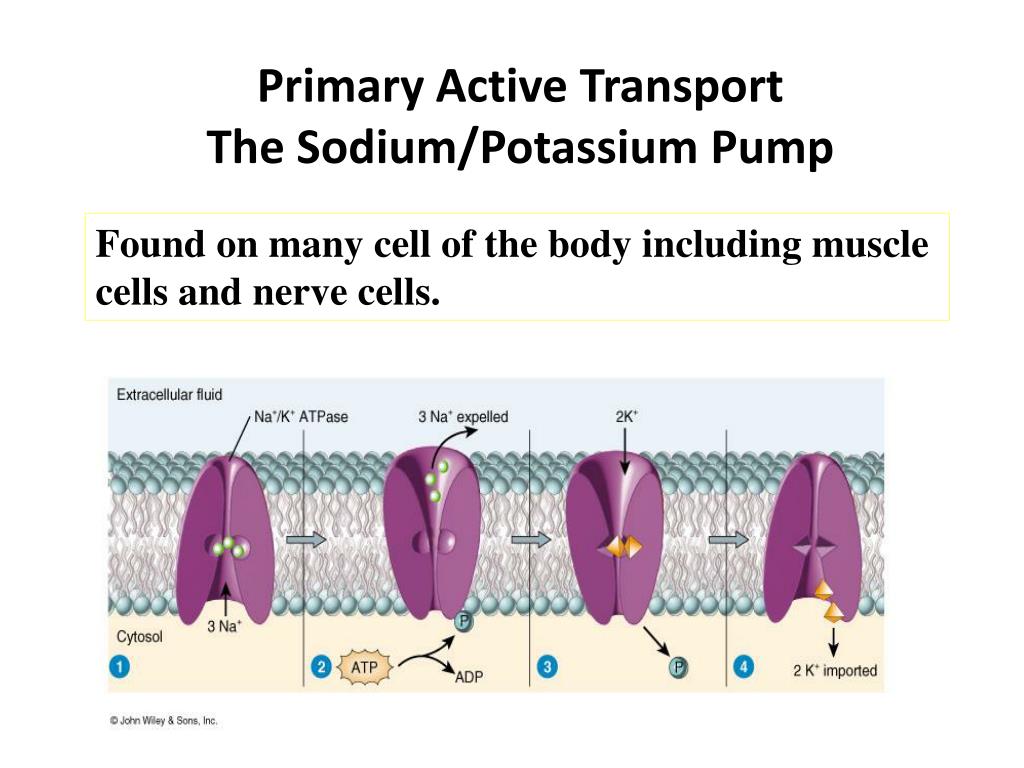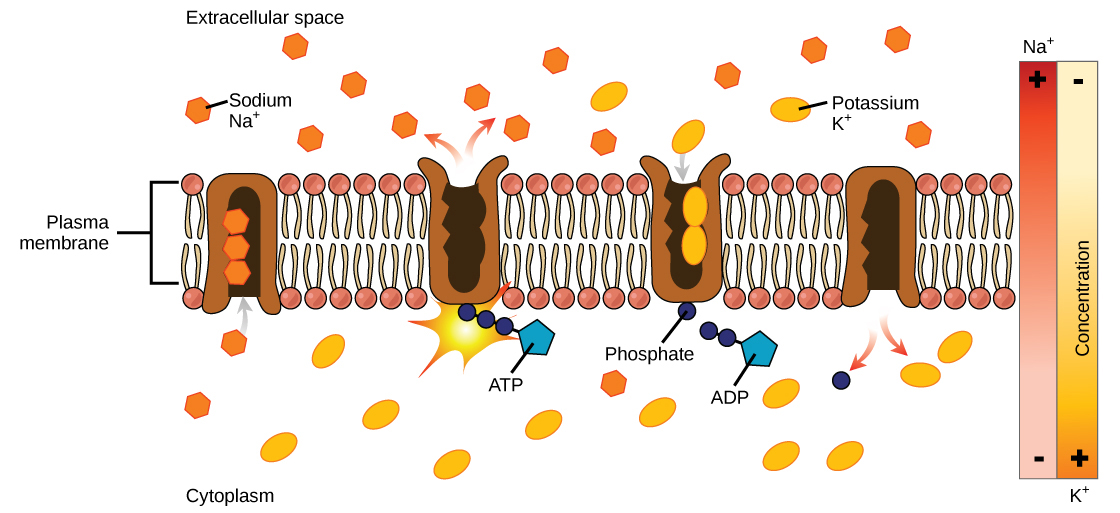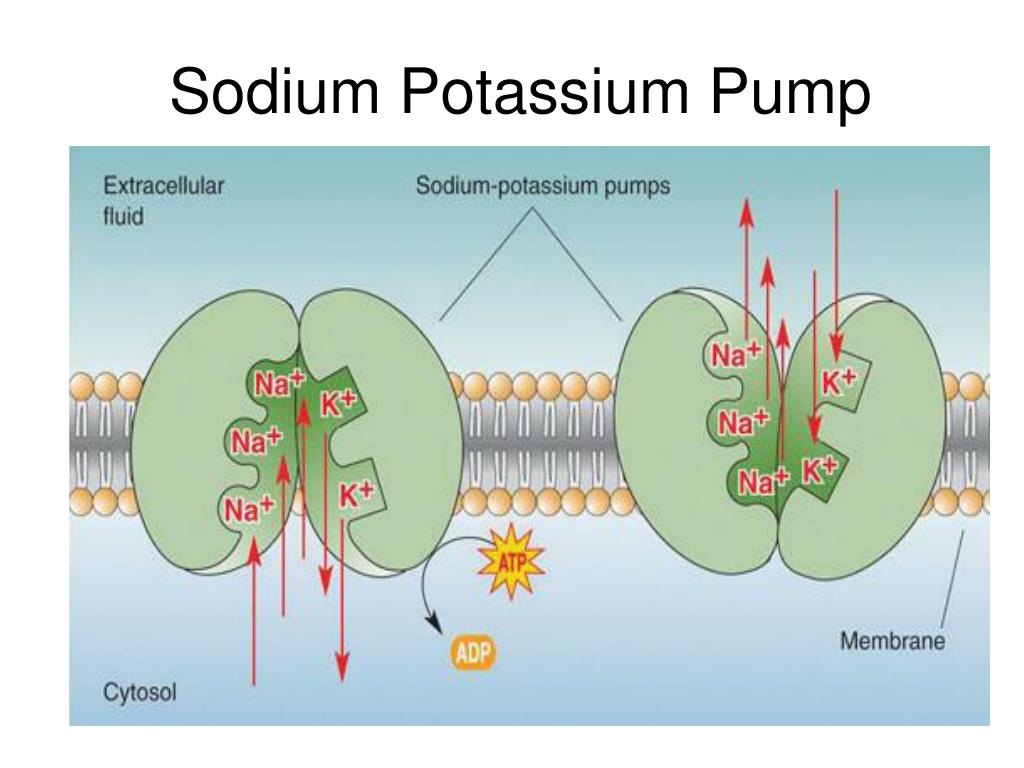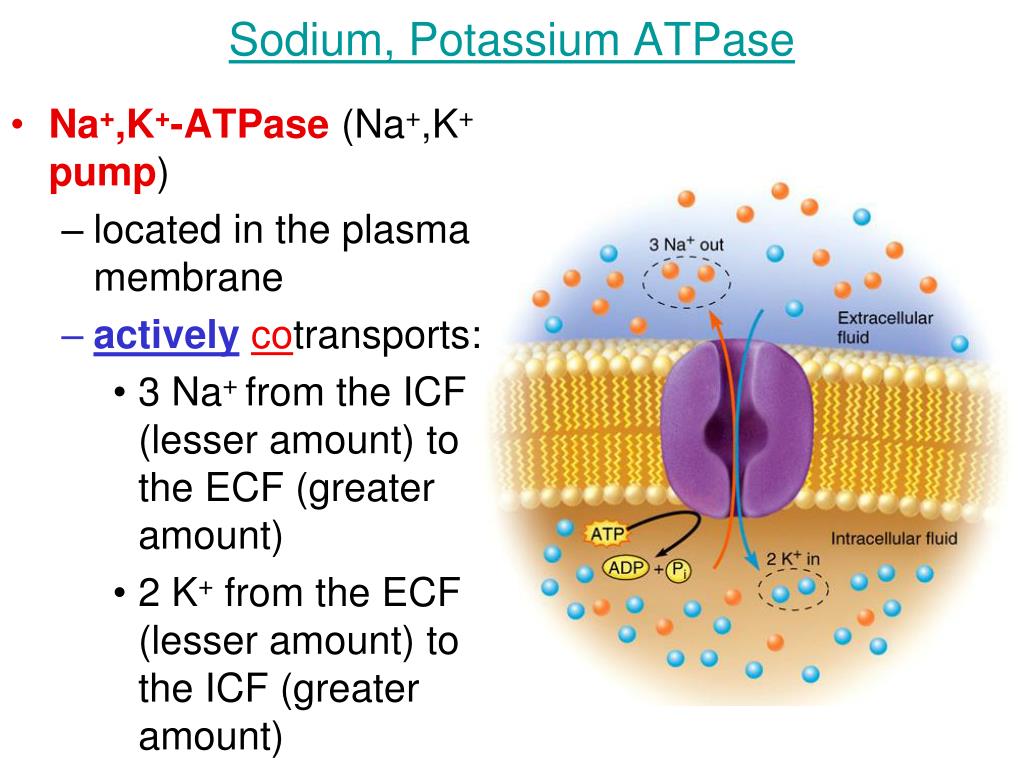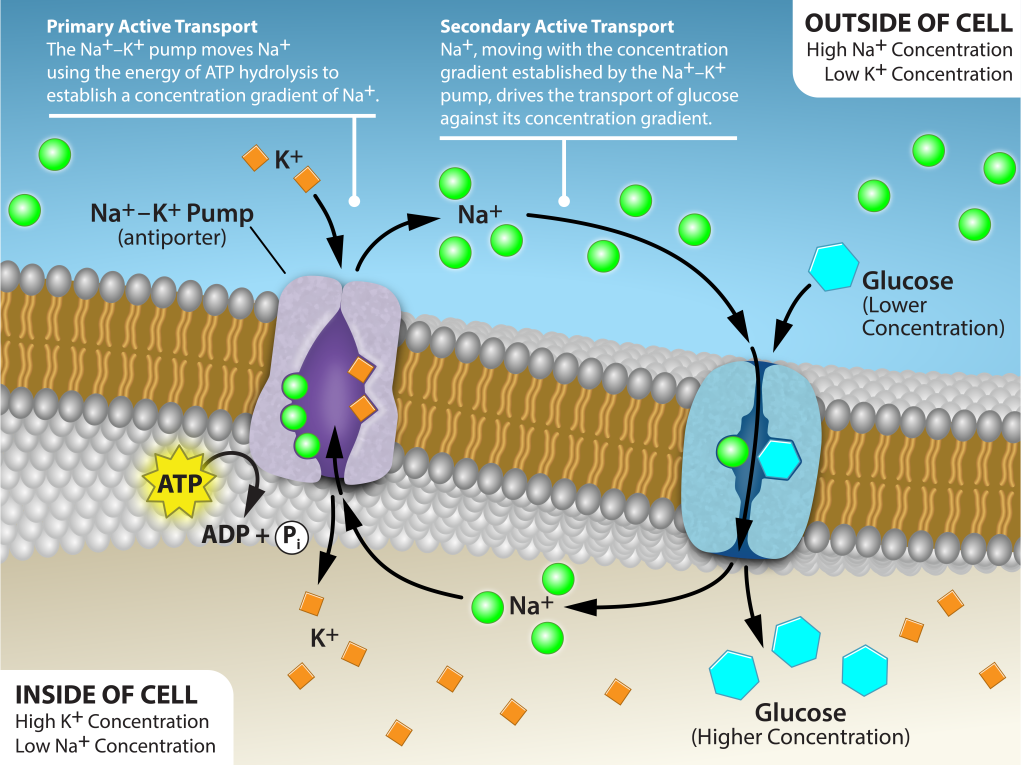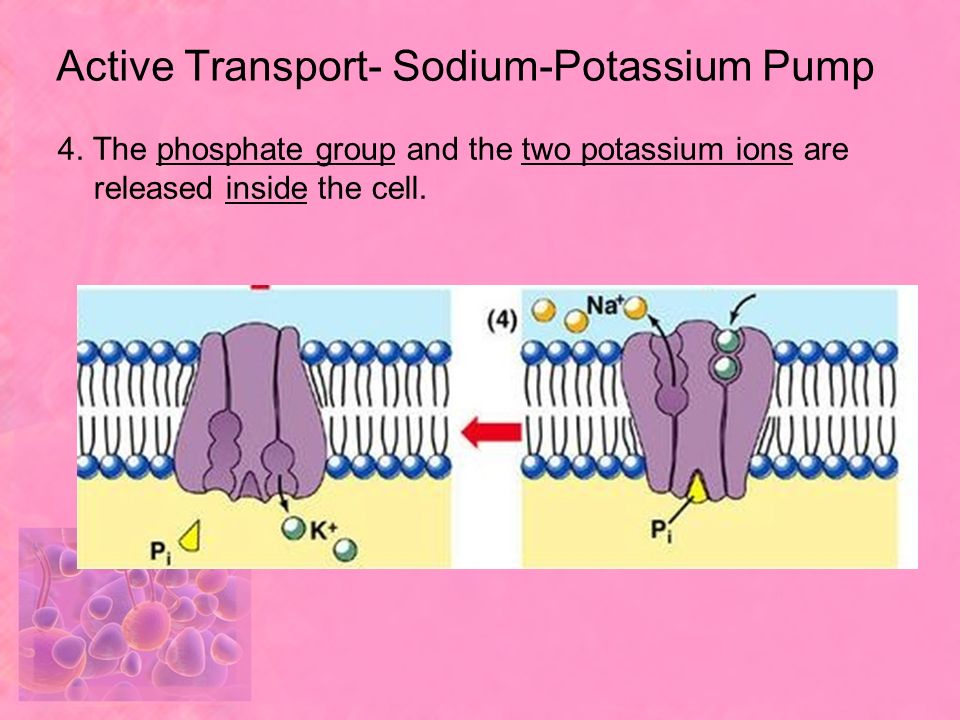Is Sodium Potassium Pump Primary Active Transport

The sodium-potassium pump, a fundamental component of cellular biology, is at the heart of ongoing discussions regarding the precise mechanisms that govern its function. This microscopic machine, embedded within the cell membrane, diligently maintains the electrochemical gradients essential for nerve impulse transmission, muscle contraction, and cellular volume regulation. Its classification as a primary active transport system, while widely accepted, deserves careful scrutiny to ensure our understanding aligns with the latest scientific evidence.
At the core of this debate lies the fundamental question: Does the sodium-potassium pump directly utilize ATP hydrolysis to drive the movement of ions against their concentration gradients? Understanding this process is not merely an academic exercise; it has profound implications for drug development, understanding disease mechanisms, and advancing our knowledge of the very foundations of life. This article delves into the intricate workings of the pump, examining the evidence that supports its classification as primary active transport and exploring any dissenting viewpoints.
The Defining Characteristics of Primary Active Transport
Primary active transport, by definition, relies on the direct hydrolysis of adenosine triphosphate (ATP) to fuel the movement of molecules across a membrane. This contrasts with secondary active transport, which uses the electrochemical gradient established by primary active transport to move other molecules. The sodium-potassium pump, also known as Na+/K+ ATPase, fits the description of primary active transport based on its well-established mechanism.
The pump's operational cycle involves a series of conformational changes driven by ATP hydrolysis. Three sodium ions (Na+) are transported out of the cell, while two potassium ions (K+) are transported into the cell, both against their respective concentration gradients. This process generates an electrochemical gradient crucial for various cellular functions, including nerve impulse transmission and muscle contraction.
The enzyme ATPase is intrinsic to the pump's function, directly binding and hydrolyzing ATP. This hydrolysis releases energy, which is then used to drive the conformational changes that move the ions across the membrane. Without ATP, the pump ceases to function, highlighting the direct link between ATP hydrolysis and ion transport.
Evidence Supporting the Primary Active Transport Classification
Numerous experiments have definitively demonstrated the direct link between ATP hydrolysis and ion transport by the sodium-potassium pump. In vitro studies, where the pump is isolated and studied in a controlled environment, have shown that ATP is the sole energy source capable of driving the pump's activity. These studies have also elucidated the specific binding sites for ATP on the pump's protein structure.
Furthermore, the use of ATP analogs, molecules that resemble ATP but cannot be hydrolyzed, has confirmed the necessity of ATP hydrolysis for pump function. When these analogs are introduced, the pump binds them but cannot use them to drive ion transport, effectively halting the pump's activity. This provides further strong evidence for the pump's reliance on ATP hydrolysis for its function.
The development of specific inhibitors, such as ouabain, has further solidified the understanding of the pump's mechanism. Ouabain binds to the extracellular side of the pump, blocking the binding of potassium and inhibiting the dephosphorylation step, effectively stopping the pump's activity. This direct inhibition confirms the integral role of the pump's ATPase activity in its transport function.
Examining Alternative Perspectives and Potential Nuances
While the classification of the sodium-potassium pump as a primary active transporter is overwhelmingly supported by scientific evidence, exploring alternative viewpoints is crucial for a comprehensive understanding. Some researchers have suggested that the pump's efficiency may be influenced by other factors beyond simple ATP hydrolysis, such as membrane potential or the presence of other ions.
These arguments often center on the idea that the pump's activity can be modulated by the cellular environment. For example, extreme changes in membrane potential could potentially affect the conformational changes of the pump, altering its efficiency, although the fundamental energy source remains ATP. These observations, however, don't challenge the primary active transport classification but rather highlight the complexity of the pump's regulation within a dynamic cellular context.
It's also important to consider the different isoforms of the sodium-potassium pump, which exhibit slight variations in their amino acid sequences and kinetic properties. These isoforms may respond differently to various cellular conditions, but the underlying mechanism of ATP-dependent ion transport remains consistent across all isoforms. Understanding these nuances enhances our knowledge of the pump's physiological roles and its potential as a therapeutic target.
The Implications for Understanding Cellular Processes
The correct classification of the sodium-potassium pump has significant implications for understanding various cellular processes. Nerve impulse transmission, for instance, relies heavily on the electrochemical gradient generated by the pump. This gradient allows for the rapid influx of sodium ions into neurons, triggering the action potential that propagates the nerve signal.
Similarly, muscle contraction depends on the sodium-potassium pump to maintain the proper ion balance for calcium signaling. Disruptions in pump function can lead to muscle weakness, cramps, and even cardiac arrhythmias. Understanding the pump's mechanism and its role in maintaining these gradients is crucial for developing treatments for these conditions.
Furthermore, the sodium-potassium pump plays a vital role in regulating cellular volume. By controlling the intracellular concentration of sodium and potassium, the pump helps to prevent cells from swelling or shrinking due to osmotic imbalances. Dysregulation of pump activity can lead to cellular swelling and lysis, contributing to various pathological conditions.
Future Directions and Research Opportunities
Future research should focus on elucidating the precise mechanisms by which the sodium-potassium pump is regulated within the cell. Understanding how various signaling pathways and cellular factors influence pump activity is crucial for developing targeted therapies for diseases associated with pump dysfunction. Advances in imaging techniques and molecular biology are providing new tools to probe the pump's structure and function at the atomic level.
Another promising area of research is the development of novel pump inhibitors with improved specificity and efficacy. Current inhibitors, like ouabain, can have off-target effects, leading to unwanted side effects. Developing inhibitors that selectively target specific pump isoforms or that can be delivered directly to affected tissues could significantly improve the treatment of various diseases.
Investigating the role of the sodium-potassium pump in aging and age-related diseases is also a critical area of inquiry. As we age, the pump's activity can decline, contributing to cellular dysfunction and increased susceptibility to disease. Understanding the mechanisms underlying this age-related decline could lead to interventions that promote healthy aging and prevent age-related pathologies.
In conclusion, the sodium-potassium pump is unequivocally a primary active transport system. The direct dependence on ATP hydrolysis to move ions against their concentration gradients is supported by overwhelming evidence. Continued research into the complexities of its regulation and function will undoubtedly lead to further advancements in our understanding of cellular biology and the development of new therapies for a wide range of diseases. This intricate molecular machine, diligently working within our cells, remains a crucial target for scientific investigation and medical innovation.
